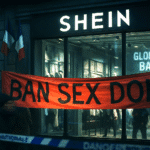A chilling trend has begun to unsettle the world of global commerce: the rise of corporate assassinations. Once the domain of political intrigue and espionage, targeted killings have now entered the boardroom, with top executives facing an emerging threat that merges public anger, online radicalization, and economic resentment. The murder of Brian Thompson, CEO of UnitedHealthcare, on December 4, 2024, in New York City marked a turning point. Shot dead outside his hotel on his way to an investor meeting, Thompson’s death sent shockwaves through corporate America and reignited fears that high-profile executives have become the new targets of ideologically or personally motivated attacks. His killer, a 26-year-old man later charged with second-degree murder, reportedly acted out of rage against what he perceived as corporate greed, a grim reflection of modern resentment toward big business.
Corporate assassinations are not entirely new, but their modern resurgence carries deeper implications. Historically, business leaders such as Renault CEO Georges Besse, assassinated in Paris in 1986 by the militant group Action Directe, and Bulgarian tycoon Iliya Pavlov, gunned down in 2003 in Sofia, were killed in politically or criminally charged circumstances. However, recent cases are driven by broader public sentiment, frustration over inequality, distrust of large corporations, and disillusionment with systems that many believe prioritize profit over people. In an age where executives are more visible and accessible than ever through social media, public events, and global travel, they have become increasingly vulnerable to both physical and reputational attacks.
The convergence of factors fueling this phenomenon is complex. Widespread economic strain, social polarization, and the digital amplification of anger through online platforms have created a climate ripe for violent expression. Experts describe recent killings as “symbolic takedowns”, acts meant to punish what attackers perceive as embodiments of corporate injustice. Analysts note that corporate leaders, once shielded by anonymity, are now public figures, their decisions, statements, and wealth scrutinized in real time. This constant exposure, combined with heightened populist rhetoric, blurs the line between business and politics, turning CEOs into potential lightning rods for societal frustration.
The consequences for the global business landscape are profound. Companies across the U.S. and Europe are dramatically increasing spending on executive protection.
A 2025 Reuters report highlighted record-high budgets for corporate security, particularly in industries such as healthcare, finance, and technology, sectors often accused of systemic inequity. Beyond the financial costs, the psychological and operational toll is mounting. Leaders are reconsidering travel plans, reducing public appearances, and tightening control over personal data. Some corporations have begun integrating “executive physical security” into governance frameworks, viewing it as essential to business continuity and stakeholder trust. In essence, protecting the CEO has become as critical as protecting company data.
The historical parallels are striking. The 1977 kidnapping and murder of German industrialist Hanns Martin Schleyer by the Red Army Faction blurred the line between political terrorism and corporate targeting. Similarly, Georges Besse’s death at the hands of militants protesting labor layoffs underscored the risks executives face when their decisions disrupt powerful social or economic structures. Today’s corporate assassinations mirror those tensions, but with a distinctly 21st-century twist, attackers are often lone actors radicalized online, driven by ideology, frustration, or personal vendetta rather than organized movements.
This rising threat also affects markets and investor confidence. While the direct financial impact of an assassination may be hard to quantify, experts warn of indirect consequences such as stock volatility, increased insurance premiums, and reduced leadership visibility. The perception that corporate heads are unsafe can erode confidence in corporate stability and governance. More broadly, it signals a cultural shift, one where the figure of the CEO, once revered as a symbol of innovation and leadership, is now increasingly vilified as an emblem of excess and detachment.
The murder of Brian Thompson serves as a sobering reminder that in a world of heightened inequality and digital extremism, business leaders can no longer assume immunity from violence. Companies are urged to conduct thorough risk assessments, limit exposure of executive routines, and embed security into corporate ethics and ESG strategies. The boardroom has become a frontline, and the role of a CEO has expanded from managing profits to surviving public hostility. The phenomenon of corporate assassinations forces organizations to rethink not only how they operate but how they protect those at their helm.


















